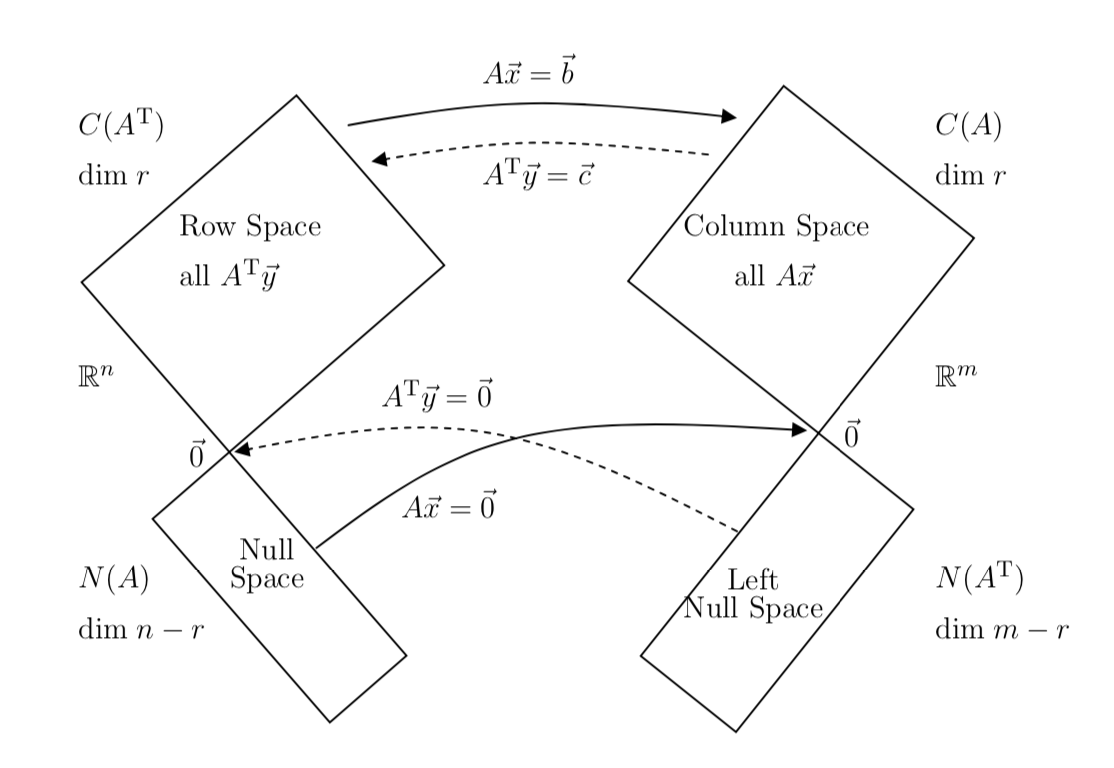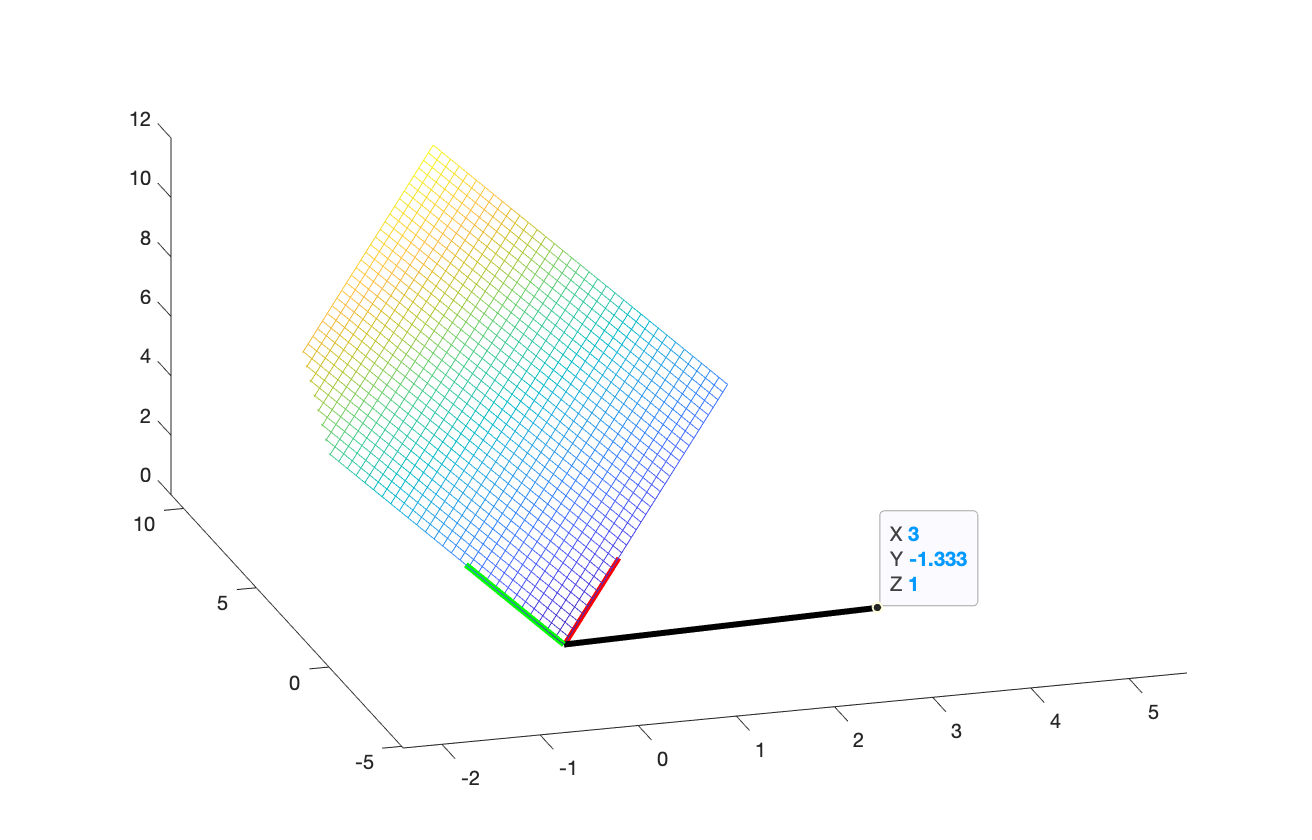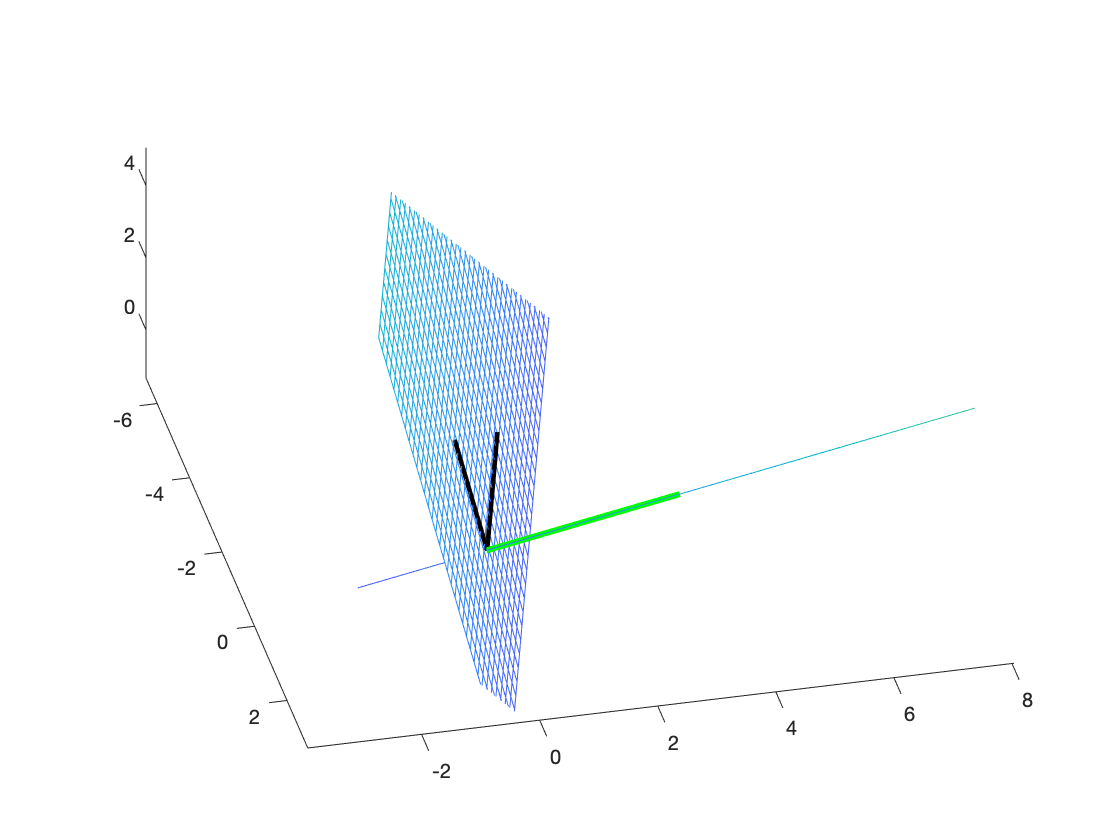Updates: 10/29/2020 - 1. added explanations for the theorem; 2. added more details to MATLAB figure’s captions; 3. added a nicer formal proof
I came across a theorem when struggling with one of the problems from my linear algebra written exam link. Besides from the determinant of block matrix, which I will talk later in another post, the theorem plays an essential role in the linked problem. Here is the theorem below:
Fundamental Theorem of Orthogonality:
Let $A$ be a $m \times n$ matrix. Then,
\[Nul(A^T) = Col(A)^{\perp}\]In other words, the column space $Col(A)$ contains every vector that is orthogonal to left nullspace $Nul(A^T)$ (in $\mathbb{R}^m$). (Why is column space in $\mathbb{R}^m$? Because every column of $A$ contains $m$ elements.)
Equivalently,
\[\begin{equation*} Nul(A)^{\perp} = Col(A^T) \end{equation*}\]I.e., the row space $Col(A^T)$ contains every vector that is orthogonal to the nullspace $Nul(A)$ (in $\mathbb{R}^n$). (Again, why are row space and null space in $\mathbb{R}^n$? Because every row of $A$ contains $n$ vectors and so does vecor in null space $x$, where $Ax = 0.$)
Before we see the mathematical proof of the theorem, we shall think about the theorem in an intuitive sense: $Ax = b$ then $b$ is in the column space, which then implies b is perpendicular to the left nullspace.
The above theorem also leads us to the following fundamental theorem:
Rank-Nullity Theorem:
\(\begin{equation*} dim(Col(A)) + dim(Nul(A)) = n \end{equation*}\)
 “Strang, G. “Linear Algebra And Its Applications 4th Ed”. Chapter 3.1. New York, Academic Press. 2006.”
“Strang, G. “Linear Algebra And Its Applications 4th Ed”. Chapter 3.1. New York, Academic Press. 2006.”
Examples:
The figures below are generated in MATLAB, notice how the vector (black line) is perpendicular to the plane spanned by two vectors (red and green line):
The orthogonal complement of a 2-d plane spanned by two vectors is a line of a vector in 3-d space.

Likewise, the orthogonal complement of a single vector is a 2-d plane in 3-d space.

Now, let us see the proof (it is very straightforward, and you can do on your own and compare):
Proof of the theorem
WTS: $Nul(A^T) = Col(A)^{\perp}$:
$(\subseteq)$ let $x\in Col(A)$, then $x = a_1v_1+a_2v_2+…+a_nv_n, $ where $a_1, a_2, …, a_n$ are columns of $A$, and $v_1, v_2,…, v_n$ are the entries of some vector $v$.
WTS: $x\perp w$, where $w\in Nul(A^T)$.
\[\begin{align*} x\cdot w &= x^T w \\ &= (a_1v_1+...+a_nv_n)^T w\\ &=(a_1v_1)^T w+...+(a_nv_n)^T w \\ &= v_1(a_1^Tw) +...+v_n(a_n^Tw)\\ &= v_1(0)+...+v_n(0)\\ &= 0 \\ \end{align*}\] \[\begin{align*} \implies & x \perp w, \forall w \in Nul(A^T) \\ \implies & x\in Nul(A^T)^{\perp} \end{align*}\]$(\supseteq)$ let $w\in Nul(A^T)$. Then
\[\begin{equation*} a_j^Tw = a_j\cdot w = 0, \forall j = 1,2,...,n \end{equation*}\]By the definition of orthogonal complement, $w \in Col(A)^{\perp}$. $\Box$
WTS: $Nul(A)^{\perp} = Col(A^T)$ or $Nul(A) \perp Col(A^T)$:
Let $x$ be a vector in nullspace where $Ax = 0$. Let $v$ be a vector in row space. Then,
\[v = A^T y, \quad \textrm{for some vector $y$ in column space}\]And then, we would have
\[v^Tx = (A^Ty)^Tx = y^TAx = y^T0 = 0\]Thus, $v^T \in Nul(A)$. Therefore, $Nul(A) \perp Col(A^T)$. $\Box$
References
Margalit, D., Rabinoff, J. “Interactive Linear Algebra”. Web. Chapter 6.2. https://textbooks.math.gatech.edu/ila/orthogonal-complements.html
Strang, G. “Linear Algebra And Its Applications 4th Ed”. New York, Academic Press. 2006.
